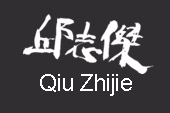| |
|
Guo Xiaoyan
Objects disperse, life continues, and one's memory and writing also continue. Qiu Zhijie made series of works discussing the idea of “object” and these objects seem to be the traces and lineages of fate in our lives, where life becomes a “theater” of dissipation and farewell. As critic Gao Shiming has commented, Let It Be (1997), one of Qiu Zhijie's photographs of the artist's living room, has objects that unintentionally create a type of enigmatic order, even the solemnity of destiny. “The quotidian objects, placed without a specific order and with the descriptive words, seem even more at ease. From Let It Be we do not only uncover existentialism, but also traces of Zen.” In One Line Sky (2009) this sense is further embodied. The object floats along the “skyline” of time, as if renewing the sky of memories. This is fate—at this very moment, the object (a mark of life) is no longer poetic or still, but is a testimony of reality; its form, like a carving of life, implies the ordinary. The unique framework is a stage where the realm of the mundane world unfolds. Here, the time of the object is measured, little by little, like sands in an hourglass, using the actual form to contain “our” reality. Eventually, we all have to confront death and time.
Photography is not only the method, by which Qiu Zhijie comprehends the world, but also a plan in which he can research time, a way in which to learn about those who have passed, to understand traveling, encounters, meeting fate, forgetting, and death. The nature of this work thus also associates itself with modern research in the field of history. Much recent historical research focuses on the ordinary, on everyday scenarios and seemingly minor events. Similarly, Landscape (1999) documents what seems to be unworthy of recording. It is subversive because what it considers worth focusing on is the mere fact of existence; for instance, in The Night of September 16, 2002: Stars with Human Fingerprints (2002), Light Writing Series, I Used to Have Seventy-two Forms (2009), “the object in the dark” is the focal point. Darkness always represents the “exterior” of the object, the emptiness of existence. The light illuminates the momentary existence of a myriad of things, the objects that have been initially “in the dark” and that allow us to discover the traces of existence at its empty bottom. The “emptiness” referred to here is not absolution, but the light of existence. Qiu Zhijie has said, “The light from the flashlight writing in mid-air spells out names of those I can remember … the act of writing is a form of retrieving memories, and retrieving one's memory becomes a ritual through writing.” He continues: “The diminishing object in an environment is no longer a topic about narrating the ‘object' but the description of the ‘incident'. It is not illustrating the disappearance of the object against its background, but describing an ‘incident' of disappearance, disappearing from life, from the world. It did not leave any traces – or certain things exist, but do not leave any traces or given any information, so you cannot sense it. Or, you have felt it, then it sank.” For the artist, the history of the object always deals with people's memories of their life and fate.
Quoted from a dialogue between Qiu Zhijie and Shu Kewen, which is from his personal website, www.qiuzhijie.com
|
